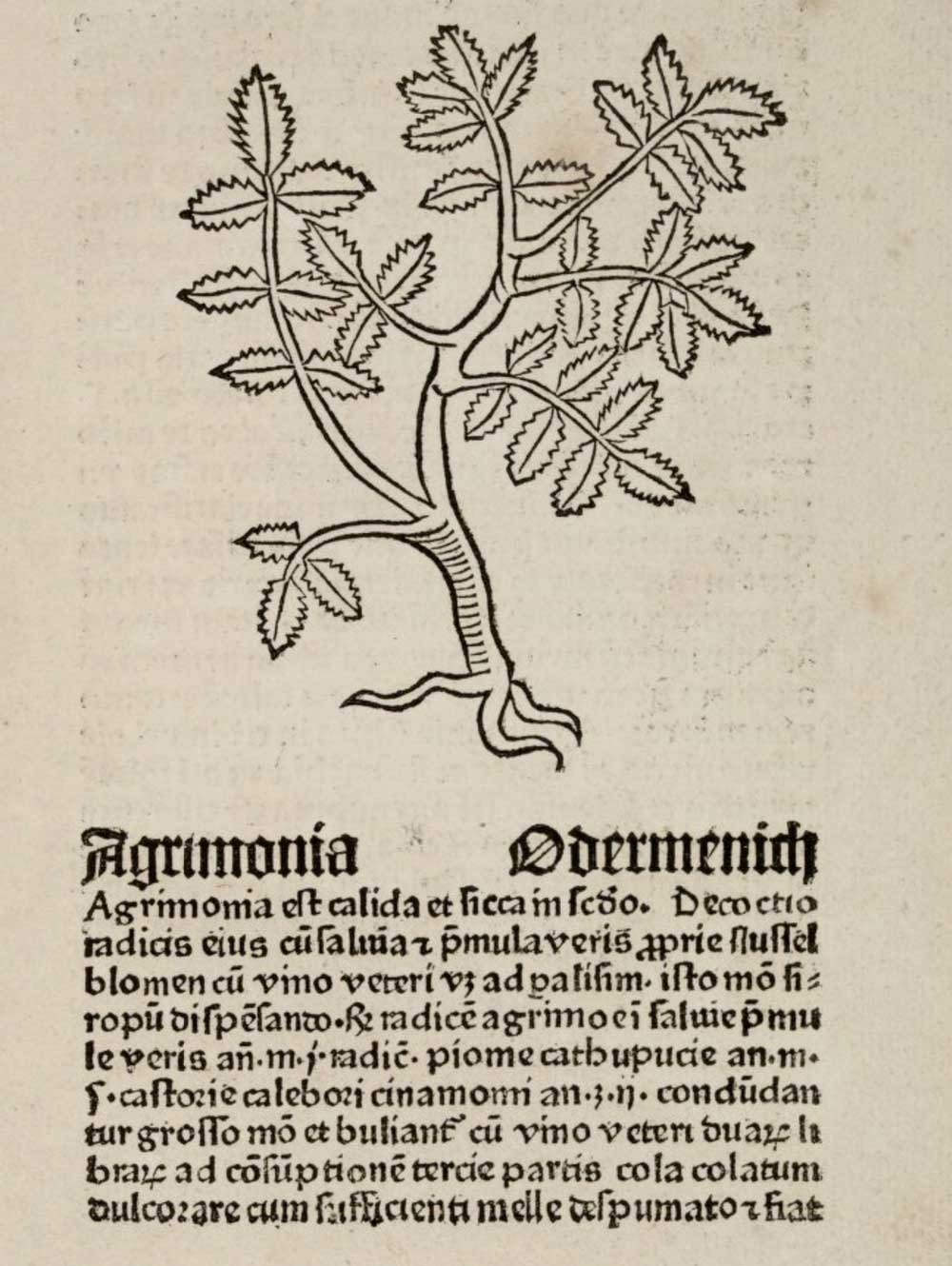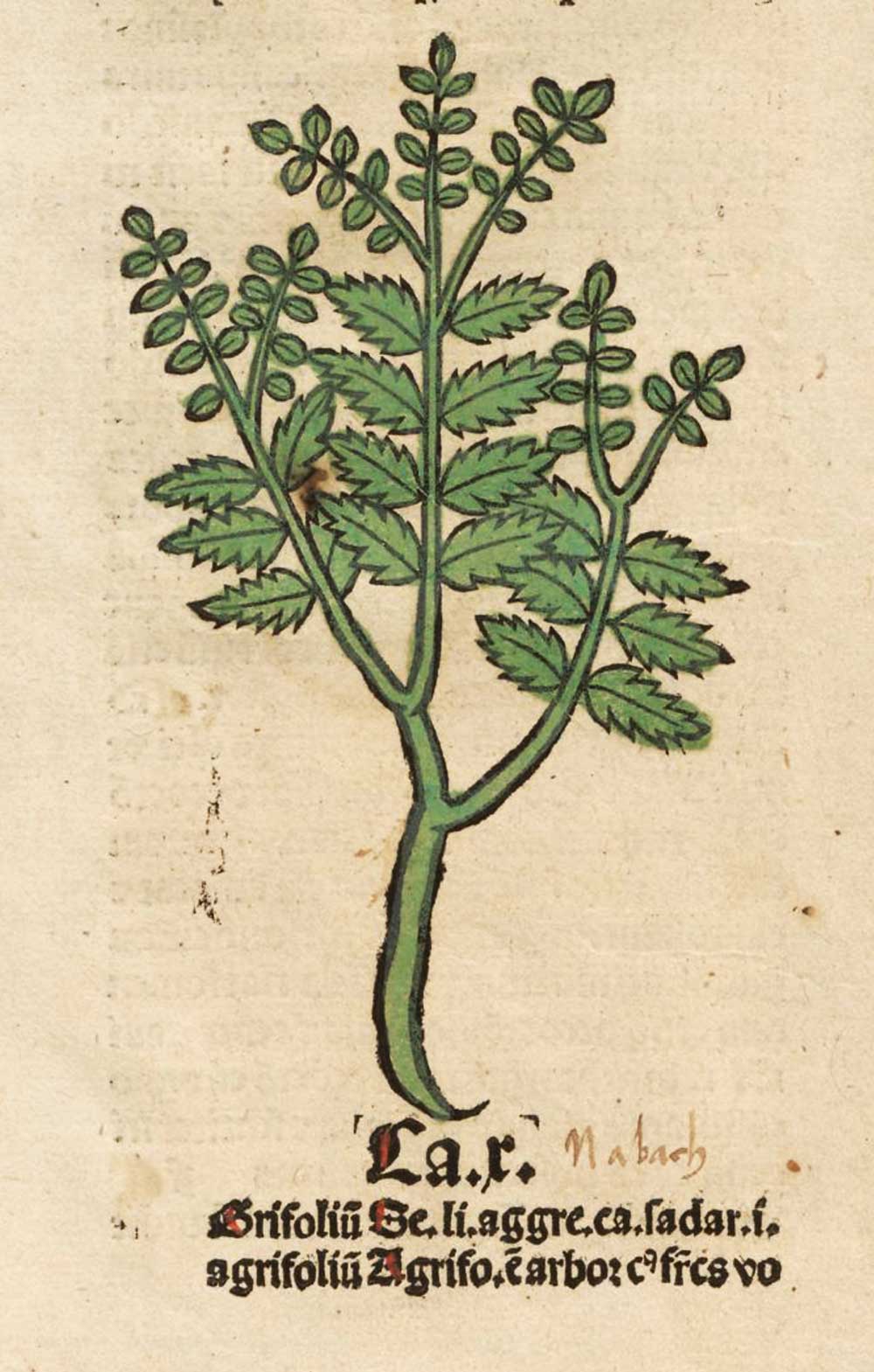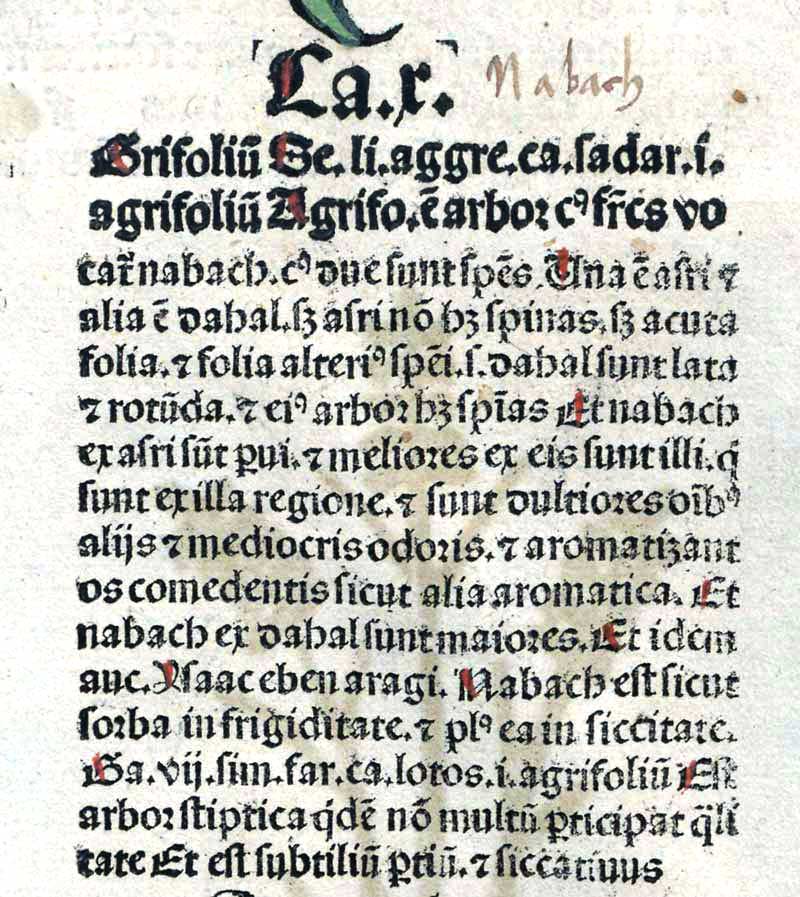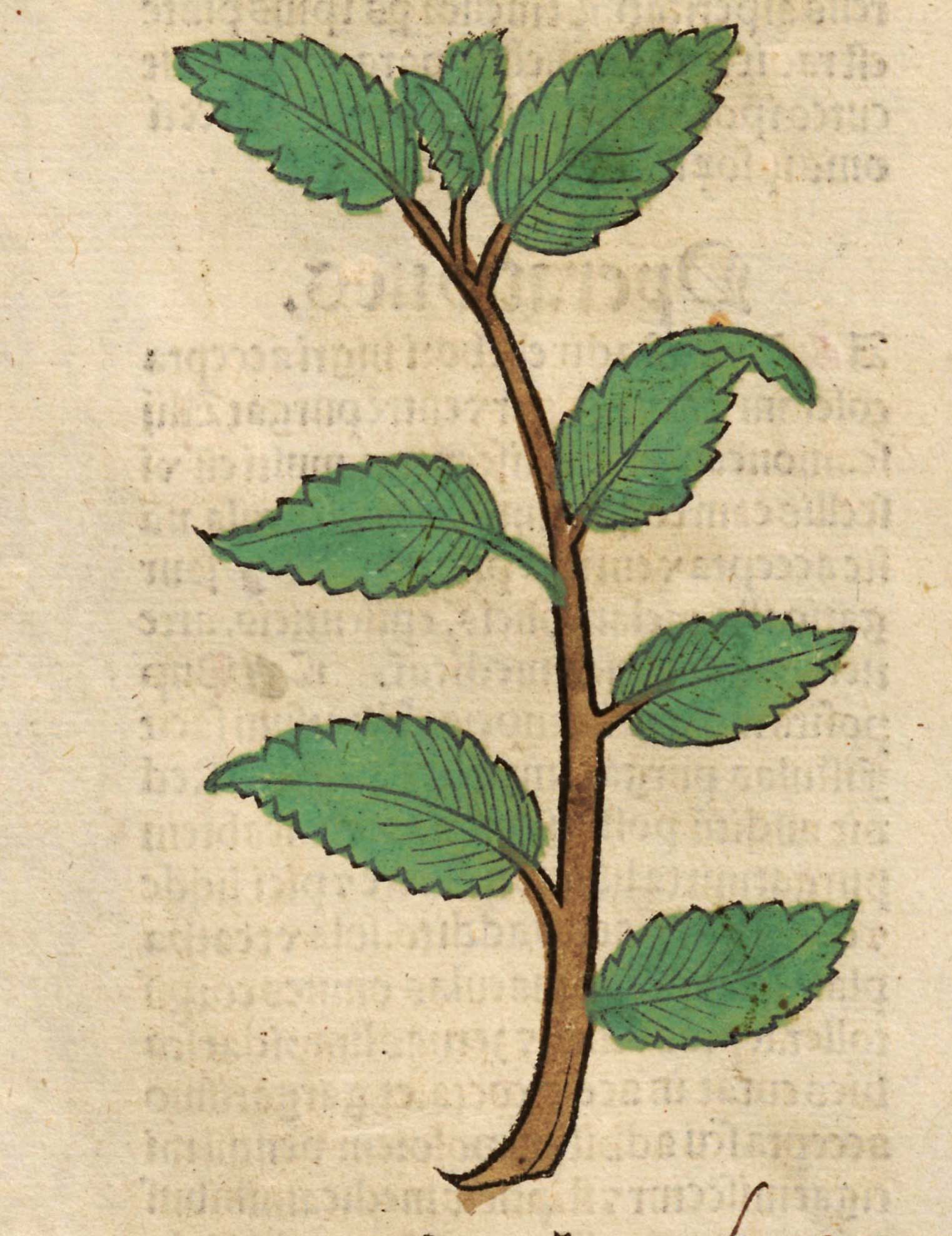Among plants in some way similar to Pantagruelion, referred to throughout Chapter 49.
Pantagruelion has leaves similar to those of agrimony.
Notes
agrimonia
Agrimony
Agrimony (text)
Eupatorium
Eupatorium (text)
aigremoine
L’aigremoine, Agrimonia eupatoria L. (Rosacée) a des feuilles composées, pinnées, à folioles lancéolées, dentées. (Paul Delaunay)
Agrimony
Agrimony
Botanical: Agrimonia Eupatoria (LINN)
There are several other plants, not actually related botanically to the Common Agrimony, that were given the same name by the older herbalists because of their similar properties. These are the COMMON HEMP AGRIMONY, Eupatorium Cannabinum (Linn.) called by Gerard the Common Dutch Agrimony, and by Salmon, in his English Herbal (1710), Eupatorium Aquaticum mas, the Water Agrimony- also the plant now called the Trifid Bur-Marigold, Bidens tripartita (Linn.), but by older herbalists named the Water Hemp, Bastard Hemp and Bastard Agrimony. The name Bastard Agrimony has also been given to a species of true Agrimony, Agrimonium Agrimonoides, a native of Italy, growing in moist woods and among bushes.
agrimony
agrimony. Forms: agrimonia, egremounde, egrimoigne, egremoyne, egrymoyn(e, egrimonie, -y, egremonie, agremony, agrymonye, agrimonie, agrimony. [adaptation of Latin agrimonia (Cels.), said to be a transformation of Greek a’rgemw´nh (Dioscor.), of unknown etymology. The Middle English forms were adopted from French aigremoine.]
A genus of plants (N.O. Rosaceae), of which one species (A. Eupatoria), to which the English name is usually attached, is common in Britain.
1040-50 Sax. Leechdoms, wortcunning, and starcraft of early England. I. 130 Þas wyrte þe man agrimoniam, & oðrum naman garclife nemneð.
C. 1328 Chester Pl. 119 Raydishe and egremounde which be my erbes.
C. 1386 Chaucer Chan. Yeman Prologue & Tale 247 And herbes couthe I telle eek many oon, As egrimoigne, valirian [v.r. egremoyne, egrymoyn(e].
1440 Promptorium parvulorum sive clericorum, Agrimony, or egrimony, herbe. Agrimonia.
1551 William Turner A new herball i. 177 Agrimony groweth among bushes and hedges and in myddowes and woddes.
1604 Middleton Courtly Masque V. 196, I grant there’s bitter egrimony in ‘em. 1671 Salmon Syn. Medic. iii. xxii. 389 Agrimony nobly opens the Liver and Spleen.
1866 Johns in Treas. Botany i. 31/1 Agrimony… contains tannin, and will dye wool of a nankeen colour.
Through confusion as to the application of Eupatoria and Liverwort, old names of Agrimony, the name has been, with or without qualification, extended to other plants.
a Bastard, Dutch, Hemp, or Water Agrimony, Eupatoria cannabina.
b Noble, Three-leaved Agrimony, Hepatica (Lyte).
c Water Agrimony, Bidens (Gerard).
d Wild Agrimony, Potentilla anserina (Lyte).
1578 Henry Lyte, translator Dodoens’ Niewe herball or historie of plantes 57 There be sundry kindes of herbes called in Latine Hepatica or Jecoraria, that is to say Lyuerwortes..The two first kindes are Bastarde Agrimonie. The third is Three leaued Agrimonie, or noble Lyuerwurte.
1578 Lyte Dodoens 57 In English wilde Tansie, Siluer weede, and of some wilde Agrimonie.
1597 John Gerard (or Gerarde) The herball, or general historie of plants ii. ccxl. 710 Water Hempe or Water Agrimony is seldomer found in hot regions.




